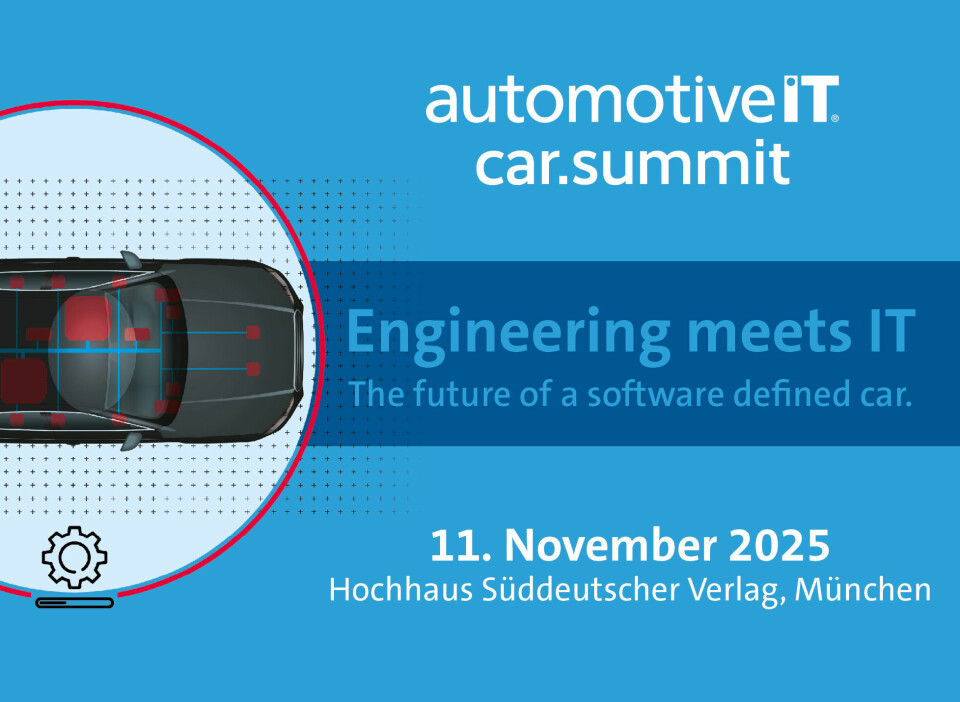Hyundai and Kia rely on 4.screen
How Vehicle Displays Become Real-Time Marketing Channels
With the 4.screen platform, contextual information, recommendations, and offers are delivered directly and in real-time via the vehicle display - a completely new touchpoint for the advertising industry.
Marko Priske
With the integration of the 4.screen platform into their infotainment systems, Kia and Hyundai are connecting vehicles, drivers, and brands in innovative ways - and opening the door to new business models.
Since November 2023, the 4.screen technology has been officially available in Hyundai and Kia vehicles. What appears on paper to be just another software update, turns out in practice to be a new, highly scalable marketing channel in the cockpit. Drivers receive context-based information, recommendations, and offers directly and in real-time via the vehicle display. The OEMs and the startup from Munich made it to the shortlist of the automotiveIT Team Award in the Software-Defined Vehicle category last year and had the opportunity to present their solution at the automotiveIT car.summit.
“Without the car, the whole model doesn't work,” emphasised Maximilian Lüders, Assistant Manager Infotainment & Connected Car at Kia, at the event in Munich. “We now have over 1.4 million connected vehicles on the roads - all with seven years of connectivity services and OTA capability. This enables us to roll out new solutions like 4.screen to existing fleets as well.”
Display instead of billboard: Marketing in the cockpit
The central vehicle display is at the heart of the solution - now often larger than a tablet. Miko Niedzwiecki, Head of Aftersales Strategy & Partnerships at 4.screen, describes the change at the car.summit as follows: “Drivers spend an average of around 50 minutes a day in the car. The screen is omnipresent - large, connected, but so far hardly used for interaction. That changes with 4screen.”
The platform connects OEMs and their vehicle displays with real businesses, such as petrol stations, supermarkets, or restaurants. These can place content on the display via the platform, precisely by location and time. "In principle, 4.screen is a mediator between the physical world and the digital cockpit, with full control remaining with the OEM," says Niedzwiecki.
Seamlessly integrated, quickly implemented
Technically, the integration runs API-based between the backends of 4.screen and the OEMs. The visual representation blends seamlessly into the existing UI/UX design of Hyundai and Kia. The time-to-market is also remarkable, says Niedzwiecki. "From the start of the project to the first vehicle with revenue, it was only five and a half months, including the summer break," says the 4.screen expert. "That is not a typical timeframe in the automotive world. That is speed."
Kia uses the platform not only as a digital service channel but also for monetisation: A portion of the advertising revenue generated through campaigns on the platform flows directly back to the OEM. "Previously, we had branded pins but no monetisation. Now we can finally participate without much effort in ongoing operations," explains Lüders.
The platform is designed to meet the highest standards of security and data protection. Drivers can interact, but they don't have to. Those who choose to open offers or send them to their smartphone via QR code or Share to Phone functionality receive individually relevant information along the route - whether to the next charging point, favourite supermarket, or fast-food chain. "Our A/B tests show that over 75% of users prefer to interact with branded pins rather than generic ones. That speaks volumes," says Lüders.
SDV Component with Scaling Potential
The Munich startup 4.screen sees itself as a component of the Software-Defined Vehicle and aims to make the car an intelligent hub in the mobility ecosystem. And all with enormous scaling potential. The platform is already integrated into 15 car brands and over 120 vehicle models. "We generate billions of data records per month. With growing OEM participation, our channel becomes even more attractive, also for the advertising industry," says Niedzwiecki. "The infrastructure is in place. The journey has only just begun."
This article was first published
at automotiveit.eu






















